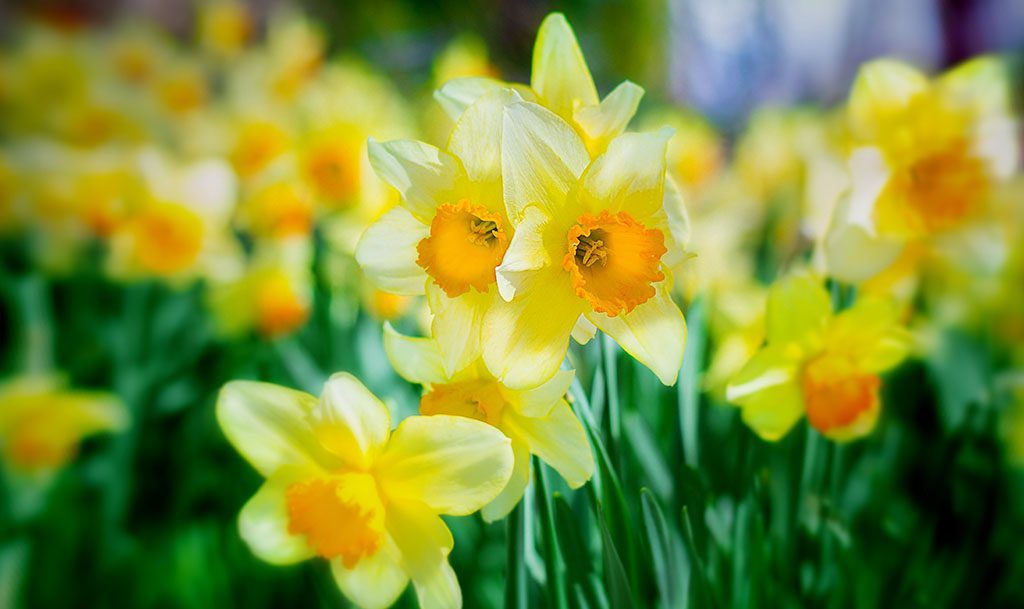
Growers’ profit margins for daffodils have grown slim as the result of decreased demand, a static retail price, and rising labor costs.
Among the tulips and other spring flowers florists use for customers wishing to herald in the season, there is one that is likely missing: the daffodil.
That’s because in the past several years profit margins for the spring perennial have grown slim, the result of a multi-year downward trend for demand coupled with a fairly static retail price. Add in rising labor costs, and growers say they’ve either quit growing daffodils or are growing them in large volume to make enough to cover costs.
Back-Breaking Work
Tyler Meskers, vice president of Oregon Flowers in Aurora, Oregon, says the farm stopped growing daffodils about seven years ago. The industry was slow to respond to changes in the market, he says, adding that growers can be overly cautious about raising prices.
The prices for daffodils should have gone up years ago to reflect rising labor costs, says Meskers. Daffodils are a labor-intensive crop because they have to be picked by hand shortly after they’re ready for harvest, and a whole field of daffodils will be ready at the same time, so growers need a lot of hands with little notice.
“They’re really short, so you’re bent over all day cutting, and you’re out in the wet and the weather,” says Meskers. “It’s hard to find people who want to do that work.”
The night before a daffodil harvest was always a sleepless one because he never knew whether the cutting crew, who were paid per stem, would actually arrive, he says.
Today, Oregon Flowers forgoes the labor issues by buying and reselling daffodils from a small local grower. “We continue to supply them because we want to keep our assortment broad,” Meskers says. “We pretty much sell them at the cost we buy them.” His seller is the last daffodil farm in the area and he is worried they may not be around long, either.
Dwindling Demand
Demand for the flowers is down from 20 years ago, says Leo Roozen, AAF, president of Washington Bulb Co. in Mount Vernon, Washington. So, too, is the number of growers planting and selling the crop. Roozen remembers a time when there were many large-scale daffodil growers like Washington Bulb Co., but that pool has shrunk considerably, he says.
Washington Bulb. Co. still grows daffodils — but mostly for floral distributors and large chain stores. In addition to selling cut daffodils, Washington Bulb Co. sells the bulbs, enabling the company to squeeze a bit more profit from the low-cash crop.
“We’re doing it on a fairly large commercial basis,” says Leo Roozen, AAF, president of Washington Bulb. “We have to do large volumes to stay in the game, so we need to sell to people that can sell large volumes.”
Picking a Different Path
Chuck and Diane Merrick don’t worry about daffodil-harvesting labor costs at their Beaufort County, South Carolina farm. In fact, they get paid not to pick the flowers. Visitors to Upickdaffodils.com pay to pick the daffodils themselves. It’s a growing trend, but the Merricks have been at it for 20 years.
In 2003, the Merricks inherited the family farm whose rows of daffodils were originally planted by a flower salesman from Holland in the 1960s. Chuck Merrick says he and his wife, Diane, have added to the daffodil farm almost every year since they acquired it. To date, the flowers encompass about 10 acres, planted in about 500 rows, each about 400 feet long. When the flowers are ready for picking, the Merricks post on their website and Facebook page and put signs along the roadway.
“Thousands come through,” says Chuck. “We have a parking area that holds probably 100 cars and sometimes it will be full for most of the morning.”
Visitors pay 50 cents per stem, up from the 10 cents his mother and sisters charged for the daffodils in the 1990s. Those who’d rather just pop in for a pre-picked bouquet can buy 15 stems for $9.
The Merricks tried to pick the flowers themselves to sell to area florists years ago, but it wasn’t a profitable venture. Transporting daffodils requires additional time and vehicle expenses. It didn’t make financial sense.
“We seem to do better selling them here on the farm,” says Chuck.
Some visitors come back to pick daffodils every year, often with family and friends in tow. For them, it’s not just about the flowers; it’s an experience.
“It’s very family-friendly and it’s a community thing,” Diane says. “We’ve got people now that are bringing their children’s children.”
Laurie Herrera is a contributing writer for the Society of American Florists.

